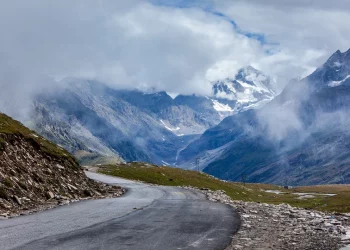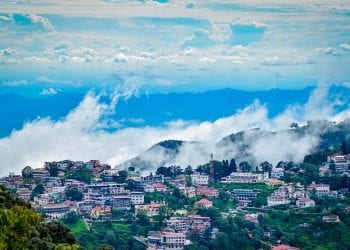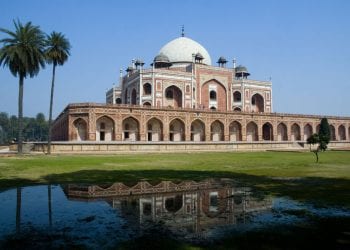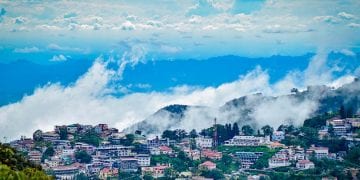Srirangam Temple- Things to Do
The Srirangam Temple or the Sri Ranganathaswamy Temple is a temple in Sriranga, an island in the city of Tiruchirapalli in Tamil Nadu. It is dedicated to Ranganatha, a reclining form of the Hindu deity Maha Vishnu. This temple exhibits a beautiful form of Dravidian architecture glorified by Alvars, the Tamil poet saints, in their Divya Prabandha – a collection of 4,000 Tamil verses composed by the 12 Alvars. This temple holds the unique distinction of being the foremost among the 108 Divya Desams dedicated to Lord Vishnu. The temple is situated in an ethereal setting on the island of Srirangam and holds a lot of religious and spiritual significance. It attracts devotees from all over the world. The kind of religious fervor you will see here is unparalleled. People from all corners of the world visit this temple to pray to their beloved deity and ask for blessings and miracles.
The Srirangam Temple is one of the grandest and most illustrious temples in South India. It has legends and history attached to it. It played a significant role in the history of Vaishnavism in South India- a school of thought that traces back to the 11th century. One of the most important exponents of Vaishnavism was the prominent Indian theologian, Ramanuja. The Srirangam temple is not merely a temple but it encompasses an entire temple town within itself. It boasts of a Sapta-Prakaram formation, a temple centred settlement pattern that comprises seven concentric rectangular enclosures also known as Parakramas. These parakrams are formed by thick and huge walls that surround the sanctum sanctorum that is presided by the deity. This Temple-Town typology is unique to this part of the world and Sri Ranganathaswamy Temple is an exceptional example of the same.
The Srirangam Temple is constructed in a unique Dravidian style of architecture and it is one of the finest examples of such an architecture in India. It is massive in scale and is spread over 156 acres (63.131 hectares). It is one of the largest functioning temples in the world according to some scholars. Apart from the 7 prakarams with massive walls, the Temple Complex has 21 very colourful sculpted gopurams (consecrated gateways with towers), 50 sub shrines, 9 sacred pools, a gilded Vimana (dome) over the sanctum sanctorum of the presiding deity, and other interesting features such as fresco paintings. The temple town, besides its religious prominence, is also a significant archaeological and epigraphical site, providing a historic window into the early and mid- medieval South Indian society and culture. There are numerous inscriptions inside that suggest that the temples not only served as the spiritual centre of the town but also a major economic and charitable institute. It had education and hospital facilities and ran a free kitchen in its premises.
The Srirangam Temple holds the position of being the largest temple compound in India and one of the largest functioning temples in the world. The temple is an active Hindu house of worship and follows the Thenkalai tradition of Sri Vaishnavism. The annual 21-day festival conducted during the Tamil month of Margazhi (December–January) attracts 1 million visitors every year.
The Legend Behind the Temple

Once in the Himalayas, the personified rivers Ganga, Kaveri, Yamuna and Saraswati were playing. One Gandharva saw these sacred rivers and offered obeisance and worshiped them from the sky. Seeing this all the rivers started arguing amongst themselves – whom did he worship? Yamuna and Saraswati stopped arguing after sometime however Kaveri and Ganga didn’t seem to reach any agreement. Finally they both approached Lord Vishnu for the answer.
River Ganga told Lord Vishnu that since her origin was from his feet, she was greater and more eminent than the River Kaveri. Lord Vishnu agreed. However, Kaveri did not. She wanted to become greater than Ganga. Thus, she performed penances to please Lord Vishnu. Soon the Lord was pleased by her penances and told her to ask for a boon. She requested the Lord to sleep on her confluences and her bank and thus bless her. Lord Vishnu agreed and told her that she would flow like a garland on the Lord’s chest – a better position than Ganga.
A Brief History of the Srirangam Temple
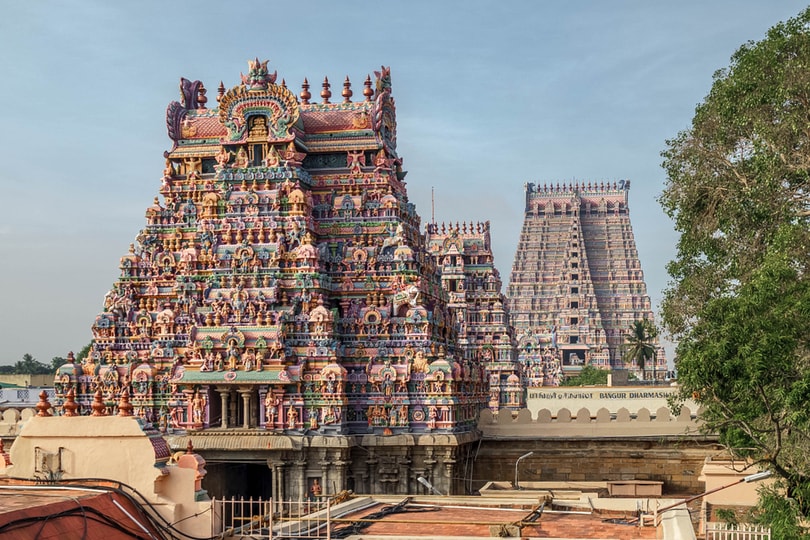
Srirangam is the foremost of the eight self-manifested shrines (Swayam Vyakta Kshetras) of Lord Vishnu . It is also considered the first and the most important of the 108 main Vishnu temples (Divyadesams). This temple is also known as Thiruvaranga Tirupati, Periyakoil, Bhoologa Vaikundam, Bhogamandabam. In the Vaishnava parlance the term “KOIL” signifies this temple. The temple spread over 156 acres is enormous in size. It has seven prakaras or enclosures. These enclosures are formed by thick and huge rampart walls which run round the sanctum. There are 21 magnificent towers in all the prakaras providing amazing viewpoints to visitors. This temple lies on an islet formed by the twin rivers Cauvery and Coleroon.
The temple of Sri Ranganathaswamy at Srirangam boasts a rich historic past. In the sixteenth century a number of foreign travelers and traders passed through the hinterland for the routes it provided for their trade with the Kingdom of Vijayanagar. In 1600, the English East India Company was formed, and 1664 the French company.
In 1680, King Aurangazeb (1658-1707), launched a campaign in western Deccan. After long sieges and a great loss of life, the fortress cities of Bijapur and Golconda fell to him, and the campaign lasted until his death.
In Europe, however, the war of Austrian succession set the English and the French at each other’s throats. Duplex captured Madras (1746), which was given back to the English two years later. The French were forced to surrender in 1752 and Duplex was disavowed and recalled in 1754.
In 1760, another French attempt, led by Lally-Tollendal, was unsuccessful and the French trading post was dismantled in 1763. From then on, the English Company gradually annexed the whole of the territory of India. Though the French came close to victory, later on they were defeated in 1798 by the English led by Wellessley who invaded Mysore and in 1799 captured the fortress of Srirangapatnam. There all of the Southern India came under the supremacy of England. The Carnatic was included in the direct administration of the Madras Presidency where it remained.
Things to Do in Srirangam
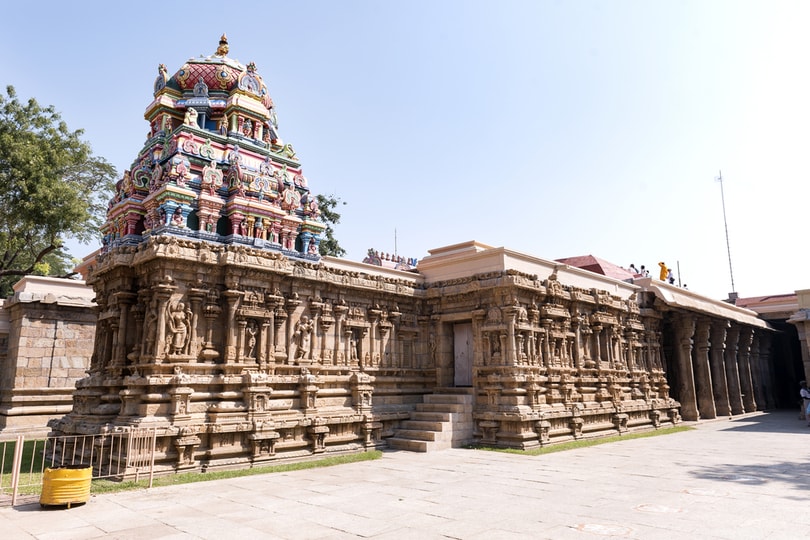
Srirangam is dotted with temples holding vast significance in Hindu mythology. It is home to a number of noteworthy places of worship. Besides the famous, Sri Ranganathaswamy Temple, the spiritual town of Srirangam houses many other places of religious and spiritual significance . The other important temples here are the Adi Ranga Temple (in Srirangapatna), the Madhya Ranga Temple (in Shivanasamudra) and the Antya Ranga Temple (in Srirangam). All these three temples are considered very important Ranganatha temples. The other famous temples in and around Srirangam are the Rockfort Temple, Thiruvanaikoil Temple, Uraiyur Vekkali Amman Temple, Samayapuram Mariamman Temple, Kumara Vayalur Temple and the Kattu Azhagiya Singar Temple to name a few. A very popular Vishnu temple in the area is the Sri Vadivazhagiya Nambi Perumal Temple that has Appala Ranganathar as the presiding deity and hence, the other name for this temple is Appakudathan Temple. The temple is located in Koviladi, a village very close to the town of Srirangam. Another famous Vishnu temple near Srirangam is at Trichy. This is the Azhagiya Nambi Temple and is a subsection of the Sri Ranganathaswamy Temple. With so many temples in the town as well as in the vicinity, it is no wonder that Srirangam is considered an important pilgrim place by the Hindus. The other important temples in Srirangam are the the Samayapuram Mariamman Temple, the Jambu Lingeswarar and the Akhilandeshwari Temple.
A good time to visit the city is during the festivals that cause the town to erupt with joy and celebrations. If you aren’t keen on putting up with boisterous crowds, avoid visiting during the festivities. Vaikunta Ekadasi festival is among the most popular religious festivals celebrated in Srirangam, when several religious rituals are performed and devotees flock the temple to partake in the festivities.Located on the banks of the river Cauvery, Srirangam is also popular for its scenic beauty. Stroll along the banks of the river, while enjoying the tranquility of its surroundings and its serene waters.
How to Reach Srirangam
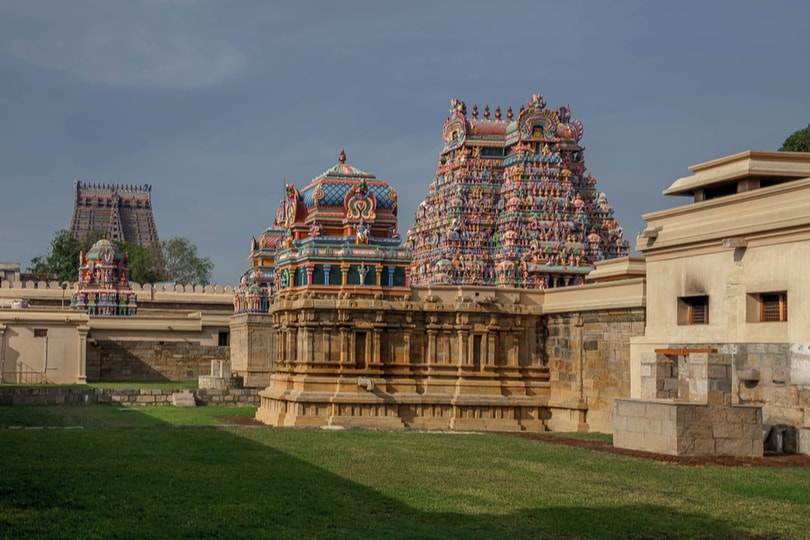
Air: The nearest airport is Tiruchirappalli International Airport
Rail: Srirangam has a railway station that can be reached from Chennai through any of the major trains travelling on the Chennai-Kanyakumari railway track. The approximate journey time from Chennai is about 5 hours and 10 minutes (320 km). Only selected trains stop at Srirangam, the rest moving on to Tiruchirappalli junction. There is bus service from Tiruchirapalli Junction to Srirangam Temple every 5 minutes throughout the day. At night, buses run once in half an hour.
Bus: Most of the bus services plying in Tamil Nadu have regular buses to this place.
Srirangam is one of the oldest and holiest cities of India. Isolated from the mainland of Tiruchirapalli owing to its geographical location , the small city is known for its religious fervor and adherence to tradition. Visit this surreally chaotic yet serene town and immerse yourself in the various hues and colors of its inimitable culture. Plan a trip to Srirangam for a truly unforgettable experience.
P.s. You might like these related resources:
- Yelagiri Hill Station- Things to Do & Places to Explore
- Top 10 Weekend Getaways From Chennai That’ll Leave You Spellbound
- Activities in Chennai that Make it a Unique Metropolis
- Historical Places In and Near Chennai That You Can’t Afford To Miss Out On
Recent Posts
Top Picks

- OYO
 15 April, 2024
15 April, 2024 - Cultural Tour

- OYO
 15 April, 2024
15 April, 2024 - Cultural Tour

- OYO
 15 April, 2024
15 April, 2024 - Cultural Tour

- OYO
 15 April, 2024
15 April, 2024 - Cultural Tour

- OYO
 15 April, 2024
15 April, 2024 - Cultural Tour

Please rotate your device
Please go back to portrait mode for the best experience





 April 15, 2024
April 15, 2024 